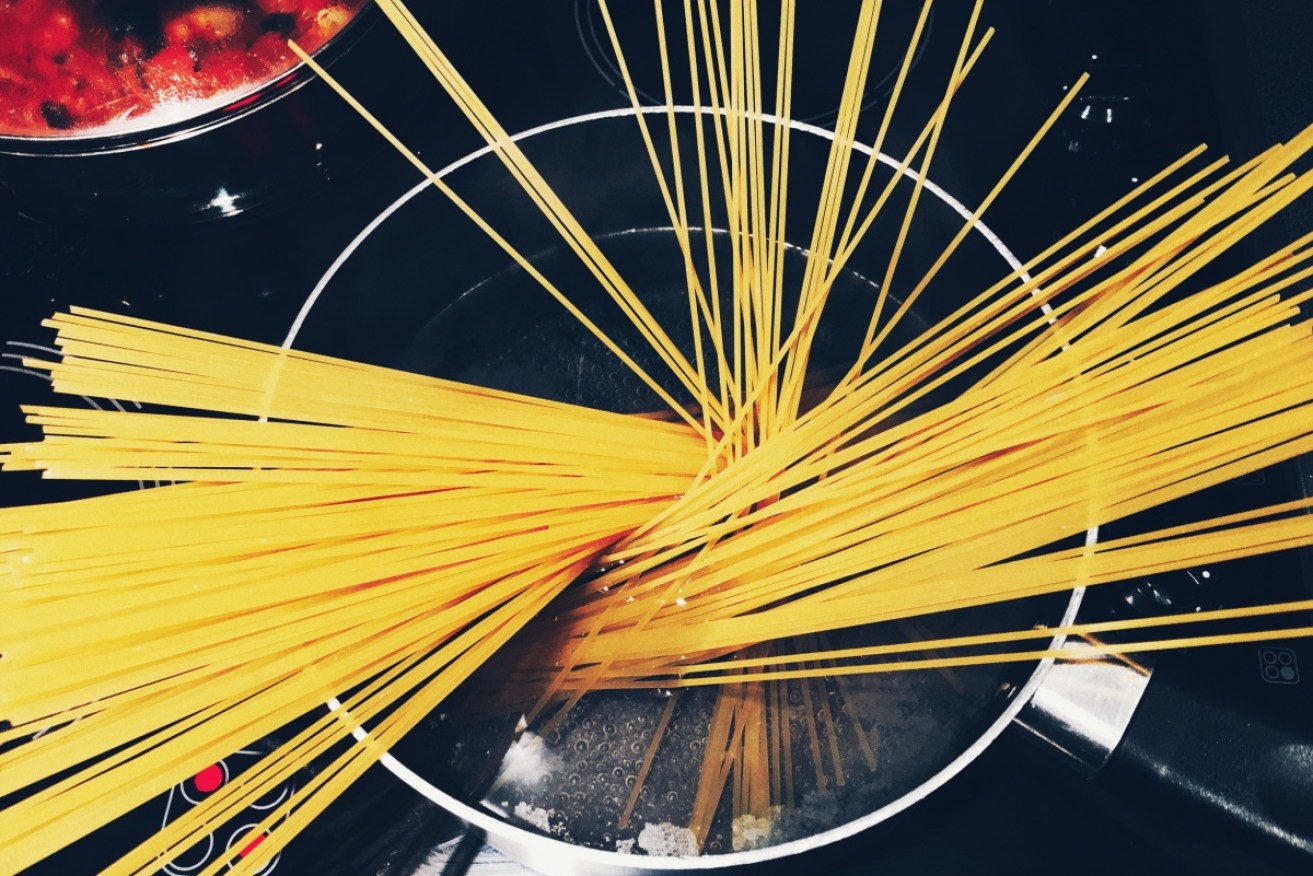Students crack age-old spaghetti mystery


Researchers have finally discovered how best to break spaghetti strands into two pieces. Photo: Getty
It’s an age-old scientific mystery that stumped one of the smartest physicians of the 20th century – how to break uncooked spaghetti in half.
Ronald Heisser and Vishal Patil, two student researchers at the Massachusetts Institute of Technology (MIT), have found the solution is to twist the spaghetti strands by about 270 degrees and then slowly bend them in half.
It was a discovery that eluded even renowned Nobel Prize-winning physicist Richard Feynman.
Dr Feynman devised some “crazy theories” to explain why spaghetti stubbornly breaks into multiple pieces but eventually gave up, according to a biography written by his friend Daniel Hillis.

Experiments (above) and simulations (below) show how dry spaghetti can be broken into two or more fragments, by twisting and bending. Photo: MIT
To come up with their discovery the American students experimented with hundreds of spaghetti sticks, they revealed in a journal paper published by the Proceedings of the National Academy of Sciences this month.
They also drew inspiration from a Nobel Prize-winning theory devised in 2005 by a group of physicians from France.
These physicians found that a spaghetti stick would break near the centre of wherever a curve forms when it is evenly bent.
This triggers a vibration effect, which creates even more fractures.
After conducting some “manual tests”, the MIT researchers “came up with an idea” that when spaghetti is twisted “really hard” and the ends are brought together, the stick “broke into two pieces”, co-author of the paper Jörn Dunkel said.
“But you have to twist really strongly,” he said.

Experiments (above) and simulations (below) show how dry spaghetti can be broken into two or more fragments, by twisting and bending. Photo: MIT
That prevents the spaghetti stick from wobbling back and forth, creating more than one centre for the spaghetti to break from.
“It will be interesting to see whether and how twist could similarly be used to control the fracture dynamics of two-dimensional and three-dimensional materials,” associate professor Dunkel said.
“In any case, this has been a fun interdisciplinary project started and carried out by two brilliant and persistent students — who probably don’t want to see, break or eat spaghetti for a while.”








